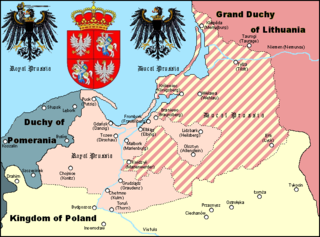 W
WThe Siege of Allenstein or the Siege of Olsztyn took place from January 1521 to February 1521, during the Polish–Teutonic War (1519–21).
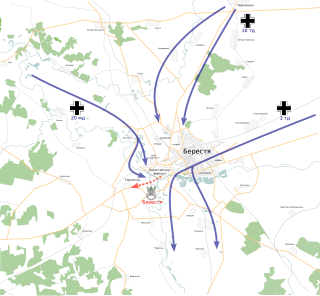 W
WThe Battle of Brześć Litewski was a World War II battle involving German and Polish forces that took place between 14 and 17 September 1939, near the town of Brześć Litewski. After three days of heavy fights for the stronghold in the town of Brześć, the Germans captured the fortress and the Poles withdrew.
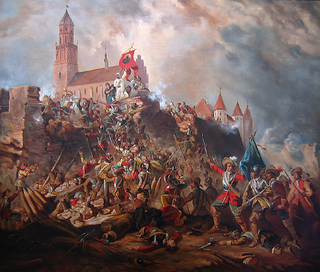 W
WThe Siege of Jasna Góra took place in the winter of 1655 during the Second Northern War, or 'The Deluge' — as the Swedish invasion of the Polish-Lithuanian Commonwealth is known. The Swedes were attempting to capture the Jasna Góra monastery in Częstochowa. Their month-long siege, however, was unsuccessful, as a small force consisting of monks from the Jasna Góra monastery led by their Prior and supported by local volunteers, mostly from the szlachta, fought off the numerically superior Germans, saved their sacred icon, the Black Madonna of Częstochowa and, according to some accounts, turned the course of the war.
 W
WThe Siege of Danzig took place between 1655 and 1660 when a Swedish force tried to capture this important Baltic Sea port city from the Polish-Lithuanian Commonwealth during the Second Northern War. After 5 years of fighting around Danzig (Gdańsk), the Swedish force which has made little ground surrendered.
 W
WThe Siege of Danzig of 1734 was the Russian encirclement and capture of the autonomous Hanseatic city-port of Danzig (Gdańsk), then linked in personal union with the King of Poland, during the War of Polish Succession. It was the first time that troops of France and Russia had met as foes in the field.
 W
WThe Defence of the Polish Post Office in Danzig (Gdańsk) was one of the first acts of World War II in Europe, as part of the September Campaign. On September 1, 1939, the Invasion of Poland was initiated by Germany when the Schleswig-Holstein battleship opened fire on the Polish-controlled harbor of Danzig, around 04:45-48 hours. Danzig paramilitaries and police, supported by Germany, immediately joined the offensive to take full control of the city, by capturing the Polish post office. Polish personnel defended the building for some 15 hours against assaults by the SS Heimwehr Danzig, local SA formations and special units of Danzig police. All but four of the defenders, who were able to escape from the building during the surrender, were sentenced to death by a German court martial as illegal combatants on October 5, 1939, and executed.
 W
WThe Siege of Fellin took place between March 25 and 17 May 1602 during the Polish–Swedish War (1600–1611). Polish and Lithuanian forces led by Grand Crown Hetman Jan Zamoyski besieged the Swedish-held town of Fellin. The large Polish–Lithuanian army of around 5,000 troops first took the town, while the Swedish defenders, numbering around 800, retreated to the city's castle. After a second frontal attack on the castle, during which the Voivode of Wenden Jerzy Farensbach was killed, the Swedish garrison capitulated, although a group of Finnish soldiers refused to surrender and blew themselves up in the castle's tower. Fellin was later recaptured by the Swedes in the siege of 1608.
 W
WThe Siege of Głogów or Defense of Głogów was fought on 24 August 1109 at the Silesian town of Głogów, between the Kingdom of Poland and the Holy Roman Empire. Recorded by the medieval chronicler Gallus Anonymus it is one of the most well known battles in Polish history. The Polish forces were led by Duke Bolesław III Wrymouth, while the Imperial forces were under command of King Henry V of Germany. Bolesław was victorious.
 W
WThe Battle of Hel was a World War II engagement fought from 1 September to 2 October 1939 on the Hel Peninsula, of the Baltic Sea coast, between invading German forces and defending Polish units during the German invasion of Poland. The defense of the Hel Peninsula took place around the Hel Fortified Area, a system of Polish fortifications that had been constructed in the 1930s near the interwar border with the German Third Reich.
 W
WThe Siege of Kamieniec Podolski was laid by the Ottoman Empire on August 18, 1672, in the Polish fortress of Kamieniec Podolski. It lasted until August 27, when Polish forces defending the city capitulated. During the siege, legendary Polish hero, stolnik przemyski pułkownik Jerzy Wołodyjowski led many successful sallies with light cavalry.
 W
WThe Siege of Kolberg took place from March to 2 July 1807 during the War of the Fourth Coalition, part of the Napoleonic Wars. An army of the First French Empire and several foreign auxiliaries of France besieged the Prussian fortified town of Kolberg, the only remaining Prussian-held fortress in the Prussian province of Pomerania. The siege was not successful and was lifted upon the announcement of the peace of Tilsit.
 W
WThe siege of Kraków was one of the battles during the Swedish invasion of Polish–Lithuanian Commonwealth. It started on 25 September 1655 and ended on 13 October 1655. Capitulation treatment was signed 4 days later. Polish troops marched out the city on 19 October. The city's defense was led by Kiev's castellan Stefan Czarniecki, while Swedish forces were commanded by king Charles Gustav and Arvid Wittenberg.
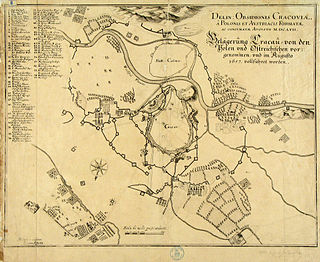 W
WThe Siege of Kraków was one of the military conflicts of the Swedish and Transylvanian invasion of Poland, which took place in the summer of 1657. The royal city of Kraków, had been occupied for two years by a Swedish-Transylvanian garrison led by Paul Wirtz and János Bethlen. It was besieged by Polish Army of Hetman Jerzy Lubomirski, supported by soldiers of the Holy Roman Empire under Austrian Field Marshal Melchior von Hatzfeldt.
 W
WThe Battle of Lwów was a World War II battle for the control over the Polish city of Lwów between the Polish Army and the invading Wehrmacht and the Red Army. The city was seen as the key to the so-called Romanian Bridgehead and was defended at all cost.
 W
WSiege of Lyakhavichy (Lachowicze) took place from 23 March to 28 June 1660 during the Russo-Polish War (1654–67). Lachowicze was one of the major Grand Duchy of Lithuania strongholds in the disputed region. A Russian army of about 30,000 under Ivan Nikitich Khovansky laid siege to the castle, defended by Mikołaj Judycki. After four failed sieges, Khovansky was forced to face a Polish relief army under hetmans Stefan Czarniecki and Paweł Jan Sapieha, and was defeated at the Battle of Polonka. This meant the end of the siege of Lachowicze.
 W
WThe Siege of Marienburg was an unsuccessful two-month siege of the castle in Marienburg (Malbork), the capital of the monastic state of the Teutonic Knights. The joint Polish and Lithuanian forces, under command of King Władysław II Jagiełło and Grand Duke Vytautas, besieged the castle between 26 July and 19 September 1410 in a bid of complete conquest of Prussia after the great victory in the Battle of Grunwald (Tannenberg). However, the castle withstood the siege and the Knights conceded only to minor territorial losses in the Peace of Thorn (1411). Marienburg defender Heinrich von Plauen is credited as the savior of the Knights from complete annihilation.
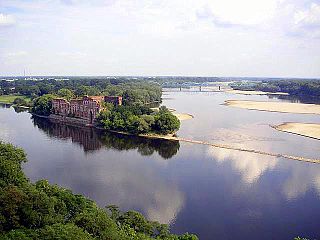 W
WThe Battle of Modlin was a battle that took place during the 1939 German invasion of Poland at the beginning of the Second World War. Modlin Fortress was initially the headquarters of the Modlin Army until its retreat eastwards. From 13 to 29 September 1939, it served as a defensive citadel for Polish forces under the command of General Wiktor Thommée against assaulting German units. The fighting was closely linked with the strategic situation of the Battle of Warsaw.
 W
WThe last major military action of Wladyslaw IV's campaign of 1617-1618 and the entire Polish-Muscovite War (1605-1618). During the short siege, which lasted several weeks in the autumn of 1618, an assault of the city was unsuccessful. Having failed, the Polish-Lithuanian government went to the conclusion of the Truce of Deulino.
 W
WThe Siege of Niemcza took place during three weeks in August 1017, in the last phase of the German–Polish War (1002–18), when the forces of the Emperor Henry II besieged the town of Niemcza controlled by the Polish ruler Bolesław I the Brave. Despite the aid of Bohemian and Lutici allies, the Imperial attack was ultimately unsuccessful, according to medieval chronicler Thietmar of Merseburg due to the arrival of reinforcements which managed to break into the city and the illness among the German forces. The failure of the siege marked the end of Henry's campaign in Poland and led the emperor to agree to the Peace of Bautzen in 1018, which left the eastern March of Lusatia and the Milceni lands under Polish control.
 W
WThe Siege of Opochka was an unsuccessful attempt by the Grand Duchy of Lithuania and the Kingdom of Poland to conquer the Muscovite fortress of Opochka during the Fourth Muscovite–Lithuanian War.
 W
WThe Siege of Pärnu took place between February 28 and March 2, 1609 during the Polish–Swedish War (1600–1611).
 W
WThe Siege of Pskov, known as the Pskov Defense in Russia, took place between August 1581 and February 1582, when the army of the Polish king and Grand Duke of Lithuania Stephen Báthory laid an unsuccessful siege and successful blockade of the city of Pskov during the final stage of the Livonian War of 1558–1583.
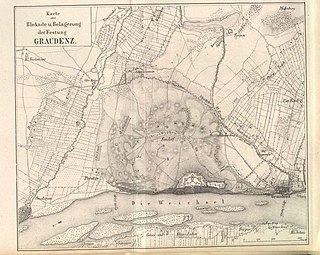 W
WThe Siege of Graudenz was a siege during the Napoleonic Wars between 22 January and 11 December, 1807. As part of the War of the Fourth Coalition the Prussian fortress at Graudenz in West Prussia was besieged by forces of the French Empire and its allies. The garrison, commanded by General Wilhelm René de l'Homme de Courbière, withheld blockade and siege for some 11 months, long past the formal Peace of Tilsit. The French abandoned the siege after the borders between Prussia and the new Duchy of Warsaw were defined; Graudenz staying a Prussian possession until after World War I.
 W
WThe Siege of Smolensk, in Polish and known as the Smolensk Defense in Russia lasted 20 months between 29 September 1609 to 13 June 1611, when the Polish army besieged the Russian city of Smolensk during the Polish–Muscovite War (1605–1618).
 W
WThe Siege of Smolensk (1613–1617) is an episode of the Polish–Muscovite War (1605–1618).
 W
WThe Siege of Smolensk lasted almost a year between 1632 and 1633, when the Muscovite army besieged the Polish–Lithuanian city of Smolensk during the war named after that siege. Muscovite forces of over 25,000 under Mikhail Borisovich Shein begun the siege of Smolensk on 28 October. Polish garrison under Samuel Drucki-Sokoliński numbered about 3,000. The fortress held out for nearly a year, and in 1633 the newly elected Polish king Władysław IV organised a relief force. In a series of fierce engagements, Commonwealth forces gradually overran the Russian field fortifications, and by 4 October the siege had broken. Shein had become besieged in his camp, and began surrender negotiations in January 1634, capitulating around 1 March.
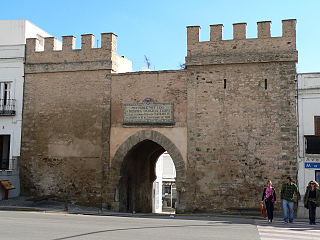 W
WIn the Siege of Tarifa from 19 December 1811 to 5 January 1812, an Imperial French army under Jean François Leval laid siege to an Anglo-Spanish garrison led by Francisco Copons. Despite the advice of British Colonel John Byrne Skerrett to evacuate the town, Copons decided to hold out. Some wanted to evacuate to and defend the small island that was attached by a causeway from the town.
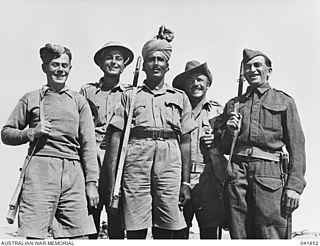 W
WThe Siege of Tobruk lasted for 241 days in 1941, after Axis forces advanced through Cyrenaica from El Agheila in Operation Sonnenblume against Allied forces in Libya, during the Western Desert Campaign (1940–1943) of the Second World War. In late 1940, the Allies had defeated the Italian 10th Army during Operation Compass (9 December 1940 – 9 February 1941) and trapped the remnants at Beda Fomm. During early 1941, much of the Western Desert Force (WDF) was sent to the Greek and Syrian campaigns. As German troops and Italian reinforcements reached Libya, only a skeleton Allied force remained, short of equipment and supplies.
 W
WThe Siege of Tortosa pitted an Imperial French army under General Louis Gabriel Suchet against the Spanish defenders of Tortosa led by General Lilli, Conde de Alacha. The siege progressed swiftly and Alacha surrendered on 2 January 1811. Tortosa is a city that lies on the Ebro River about 80 kilometres (50 mi) southwest of Tarragona. The action took place during the Peninsular War, part of the Napoleonic Wars.
 W
WThe Siege of Warsaw took place between April 24 and July 1, 1656. Swedish Empire forces had occupied the Polish capital without fighting in early September 1655. In late April 1656, Poles and Lithuanians began the siege, with the purpose of recapturing their capital. They were successful, but later lost the city for a second time after a battle held on July 28–30, 1656.
 W
WThe Siege of Warsaw in 1939 was fought between the Polish Warsaw Army garrisoned and entrenched in Warsaw and the invading German Army.
 W
WThe Siege of Warsaw of 1794 was a joint Russian and Prussian siege of the capital of the Polish-Lithuanian Commonwealth, during the Kościuszko Uprising in the summer of 1794. It ended with the Polish victory when, after a two-month siege, the Prussian and Russian army ended the siege and withdrew from Warsaw.
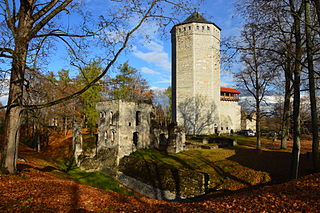 W
WThe Siege of Weissenstein took place between May 31 and September 30, 1602, during the Polish–Swedish War (1600–11). Two weeks after the capture of Fellin, Grand Crown Hetman Jan Zamoyski led the Polish-Lithuanian army of 2,000 troops to besiege Weissenstein. Weissenstein, a major transportation hub in Estonia, was a site of strategic importance to both Poland and Sweden. Located among the marshes and built during the Teutonic period, the castle had strong artillery and was defended by 700 soldiers, local peasants, and townspeople. Weissenstein was a walled city with 30-meter towers at the corners and high bastions, and thus presented the attacking force with a significant barrier to success, even with siege works.
 W
WThe Battle of Westerplatte was one of the first battles of the German invasion of Poland, marking the start of the World War II in Europe.
 W
WThe Siege of Wolmar occurred during the Polish–Swedish War (1600–1611), between October 18 and December 18, 1601. Polish forces, numbering around 15,000, with 50 pieces of artillery, led by the Grand Crown Hetman Jan Zamoyski besieged the city defended by about 1,000 infantry under Jacob De la Gardie and Carl Carlsson Gyllenhielm. Other notable commanders on the Polish side included the Field Crown Hetman Stanisław Żółkiewski and the field marshal Jürgen von Farensbach. The king of Poland, Sigismund III Vasa, was initially present at the siege, but left for Wilno on December 5. At first the Swedish artillery managed to hold back the Poles who did not intend to storm Wolmar without proper siege cannons. However, on December 8 such pieces arrived and an intense bombardment of Wolmar was executed which continued for ten days. Finally on December 18, when the cannons had breached two entrances in the walls, the Polish troops managed to storm the defenses and entered the city. The Swedish garrison withdrew to the town's castle where they defended themselves and held back the Poles for a while. Later, when the situation became particularly disadvantageous, they asked for conditions of surrender. Subsequently, after capitulation, the Swedish officers were taken prisoner by the Poles while the rank and file soldiers were allowed to leave after swearing an oath that they would not continue to fight against the Polish-Lithuanian Commonwealth. The captured Swedish generals Pontus De la Gardie and Carl Carlsson Gyllenhielm were treated very well until they were transferred to the king. Sigismund decided to lock them in the castle of Rawa. Conditions there became very tough. De la Gardie was exchanged and returned to the Swedish army in 1605. Gyllenhielm was held captive until 1613.
 W
WSiege of Zamość was part of The Deluge, a series of campaigns in the Polish–Lithuanian Commonwealth, that took place in early 1656.